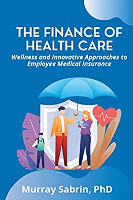
How healthy are American adults? 6 in 10 adults in the US have a chronic disease and 4 in 10 adults have two major health challenges.

Image by Robs123
How healthy are American adults? According to the CDC’s National Center for Chronic Disease, Prevention and Health Promotion (NCCDPHP), 6 in 10 adults in the US have a chronic disease and 4 in 10 adults have two major health challenges. Heart disease, cancer, chronic lung disease, stroke, Alzheimer’s disease, diabetes, and chronic kidney disease are the leading causes of death and disability, which has driven America’s health care costs to more than $4 trillion annually.
Lifestyle choices are a predominant cause of these illnesses and have pushed medical care costs to the highest percent of GDP of any industrialized nation in the world. Spending on American healthcare will soon be 20 percent of GDP — far above any industrial nation, whose adult populations are healthier than their US counterparts. In other words, high medical expenditures do not cause adults to have optimal health.
And yet, health care providers know, or should know, the road to optimal health for both adults and young people. Transmitting this information to patients would go a long way toward reducing America’s total medical care costs and increasing the wellness of both blue- and white-collar workers.
Commonsense Recommendations to Improve Health
Commonsense recommendations known for decades include keeping weight down by reducing intake of sugar, refined carbs, and saturated fats; eating enough fruits and vegetables and foods rich in Omega 3 daily; staying hydrated; exercising; not smoking and drinking alcohol in moderation; and minimizing stress. Alongside healthy behaviors, they can recommend adding appropriate supplements to build up the immune system — the first line of defense against illness and disease.
Unfortunately, American adults either don’t know what will improve their health or disregard the recommendations of their family doctors. And the poor choices among adults has resulted in 41.9 percent of adults who are obese.
One of the explanations for the high rate of obesity in America is that adults who have employer-based medical insurance feel their lifestyle choices, even if they cause a major illness or disease, will be taken care of by their employer’s insurance carrier.
For better for worse, many working Americans have been dependent on their employers to provide them with health insurance — or more accurately, medical insurance. Medical insurance pays for doctors’ visits, hospital stays and drugs. On the other hand, “health insurance” is what individuals do to obtain optimal health. So, given the state of health among adults, what can — and should — employers do to improve their employees’ health?
What Can Employers Do to Increase Employee Wellness?
An article in the Harvard Business Review presents seven research-based strategies that employers could use to increase employee wellness, including wellness practices in the workplace. The authors suggest that wellness could improve through employee empowerment, flexibility in the workplace, increased camaraderie among workers, and managerial attention to workers’ personal needs. A corporate culture that focuses on employee self-perception is a high priority and would increase job performance and reduce employee burnout, and hence turnover.
In addition, given the health challenges American workers face, a successfully designed wellness program could have enormous benefits to employees and their employers, who have been facing ever rising medical insurance premiums for decades.
For example, Rosen Hotel and Resorts (Orlando, FL) has one of the most successful corporate wellness programs in the country. According to Health Rosetta’s case study of the Rosen program, the company has saved hundreds of millions of dollars in healthcare costs by providing on-site health services, health coaches, nutritionists, and nurses. The savings have been used to pay for employees and their children’s college expenses. Based on the Rosen experience, Health Rosetta states, “If all employers followed suit, we could conservatively remove $500 billion of waste from health care and shift it to more productive sectors of the economy.”
Imagine how your company could benefit from a wellness program that would improve the health of your employees, reduce absenteeism and turnover, and increase your bottom line.
Components of a Company Wellness Program
Several components of a company wellness program include:
- On-site fitness center
- Smoking cessation programs
- Transit options
- Paramedical services
- Yoga classes
- Healthy lunch and snacks
- Assistance programs
- Naps
- Wellness challenges
- Wellness adventures
A company can pick and choose which components would be most beneficial to its employees, beginning with implementing two or three initially. Once employees embrace the culture of wellness, the benefits should immediately appear. In short, everyone’s bottom line would increase, while employees’ waist lines would shrink as they achieved optimal health.
Copyright 2022. All Rights Reserved.
Printed with permission.
Book by this Author
BOOK: The Finance of Health Care
The Finance of Health Care: Wellness and Innovative Approaches to Employee Medical Insurance
by Murray Sabrin Employee health care costs have skyrocketed, especially for small business owners. But employers have options that medical entrepreneurs have crafted to provide all businesses with plans to improve their employees’ wellness and reduce their costs. Thus, the cost of employee health care benefits can be reduced markedly by choosing one of numerous alternatives to traditional indemnity policies.
Employee health care costs have skyrocketed, especially for small business owners. But employers have options that medical entrepreneurs have crafted to provide all businesses with plans to improve their employees’ wellness and reduce their costs. Thus, the cost of employee health care benefits can be reduced markedly by choosing one of numerous alternatives to traditional indemnity policies.
The Finance of Health Care provides business decision makers with the information they need to match the optimal health care plan with the culture of their workforce. This book is a must guide for corporate executives and entrepreneurs who want to attract—and keep--the best employees in our competitive economy.
For more info and/or to order this book, click here. Also available as a Kindle edition.
About the Author
 Murray Sabrin, PhD, is emeritus professor of finance, Ramapo College of New Jersey. Dr. Sabrin is considered a “public intellectual” for writing about the economy in scholarly and popular publications.
Murray Sabrin, PhD, is emeritus professor of finance, Ramapo College of New Jersey. Dr. Sabrin is considered a “public intellectual” for writing about the economy in scholarly and popular publications.
His book, The Finance of Health Care: Wellness and Innovative Approaches to Employee Medical Insurance (Business Expert Press, Oct. 24, 2022), provides business decision makers with the information they need to match the optimal health care plan with the culture of their workforce
Learn more at murraysabrin.com, and follow his commentary twice a week at murraysabrin.substack.com.
More books by this Author.

